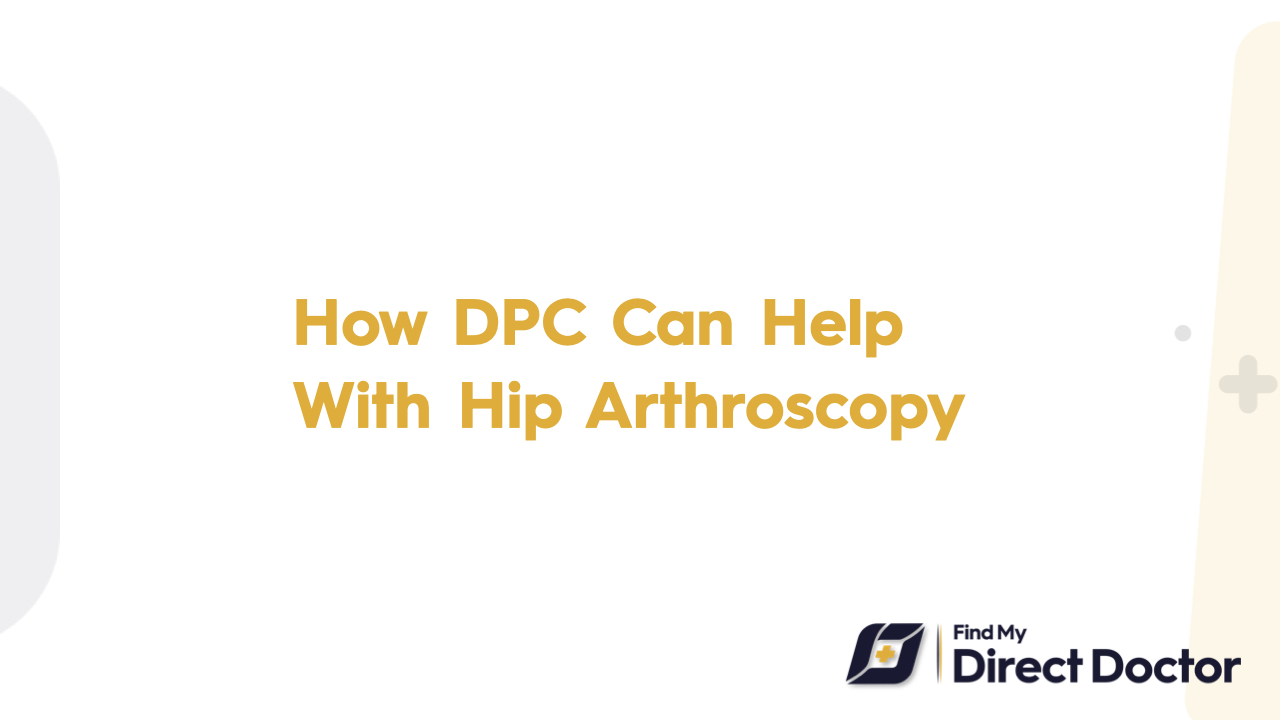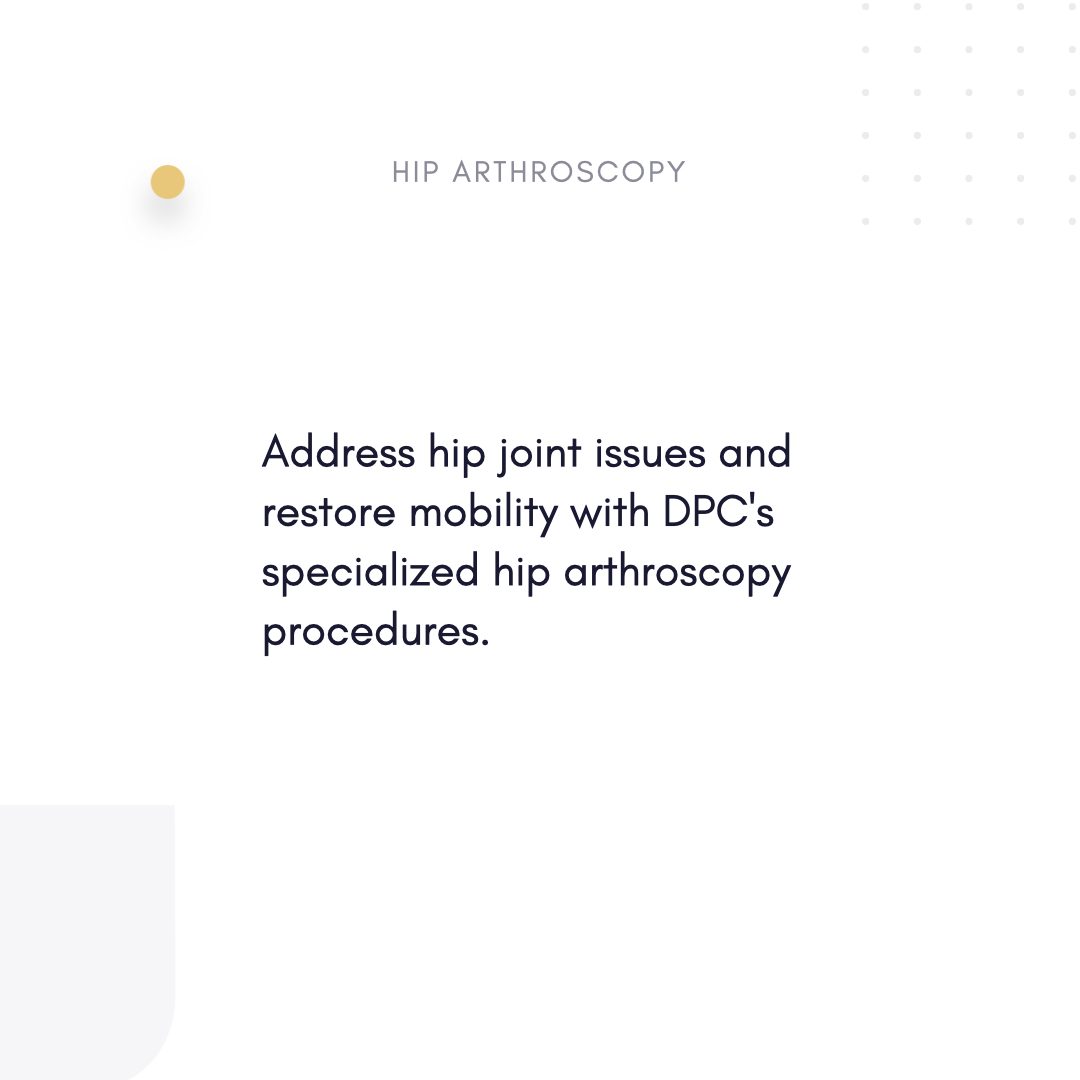Hip Arthroscopy and Direct Primary Care (DPC): Precision Recovery, Personalized Support
Hip arthroscopy can fix your hip pain caused by labral tears, FAI (femoroacetabular impingement), or cartilage damage that makes it hard for you to move. Direct primary care (DPC) makes sure that this complicated procedure is done by professionals and that you get good care after it.

Understanding hip arthroscopy for joint preservation through keyhole surgery
Hip arthroscopy uses a camera and small cuts to fix labral tears, which are tears in the cartilage that surrounds the hip socket.
- Shaving bone spurs: Fixing FAI to protect joints from damage.
- Get rid of loose bodies: pieces of cartilage that are hurting or locking up.
It takes 6 to 12 weeks to fully heal, but you can start doing things again slowly.
Patients should know this important information:
- Uses: Helps young adults and athletes with hip pain that is caused by mechanics.
- Safety: There is less than a 2% chance of infection or nerve damage.
- Prices: Regular clinics charge between 15,000 USD and 30,000 USD. DPC lowers costs by putting together care.
Risks of delaying surgery:
- The progression of osteoarthritis.
What DPC Does to Change How Hip Arthroscopy Is Done
Direct Primary Care (DPC) replaces uncoordinated orthopedic care with support that is centered on the patient.
1. Better Pre-Op Optimization
- Advanced imaging: MRI or CT to look for tears in the labrum or FAI.
- Surgeons working together: Collaborate with the top hip preservation specialists.
- Programs for prehab: Strengthening your core and hip muscles will help you get better faster.
2. Clear costs and help for the whole person
- Prices that cover everything: As a member, you get labs before surgery, physical therapy after surgery, and follow-up visits.
- Lower costs: DPC patients save 5,000 USD to 10,000 USD on surgery because they pay less.
- If surgery isn't needed right away, you can also talk about conservative management, like physical therapy or injections.
3. Recovery with kindness and long-lasting mobility
- Access: Every day of the week, 24 hours a day: If you suddenly swell, have a fever, or have more pain, get help right away.
- Plans for rehab that are made just for you: A physical therapist can help you go from using crutches to doing strength training.
- To protect the joint, suggest low-impact activities like swimming or biking as a form of preventive care.
Real-Life Success Stories
- Case 1: Sarah, who was 28 years old, had a tear in her labrum. Her DPC team did an arthroscopic repair, and she was able to play soccer again in six months.
- Case 2: John, age 35, has FAI. John's DPC provider fixed the problem that was causing his long-term groin pain.
Hip Arthroscopy in DPC: Questions and Answers
- Q: When can I get back on the road after surgery?
- A: 1–2 weeks for the left hip and 4–6 weeks for the right hip (if the car has a manual transmission).
- Q: Do I need to see a physical therapist?
- A: Yes. DPC arranges for physical therapy to be done at home or in a clinic for at least 12 weeks.
- Q: Are there follow-up MRIs included?
- A: Yes. In six months, schedule imaging to check on the healing process.
- Q: What happens if the pain doesn't go away after surgery?
- A: DPC looks into other options for treatment, like injections of PRP and hyaluronic acid.
DPC is the Best Way to Keep Hips Safe
The American Academy of Orthopaedic Surgeons (AAOS) says that it is very important to act quickly. DPC works by:
- Reducing wait times: 90% of surgeries are done in less than three weeks instead of three months or more.
- Lessening problems: Proactive PT cuts stiffness rates by 40%.
- Saving money: Members can save between 7,000 USD and 15,000 USD by getting care in a bundle.
Final Thoughts
Hip arthroscopy is more than just fixing a joint; it's also about helping you move without pain. DPC gives you a partner who will take care of everything from diagnosis to rehab to make sure you get better as soon as possible. There are no problems with insurance or missed follow-ups. Just expert care that gives you the confidence to move into an active future.






